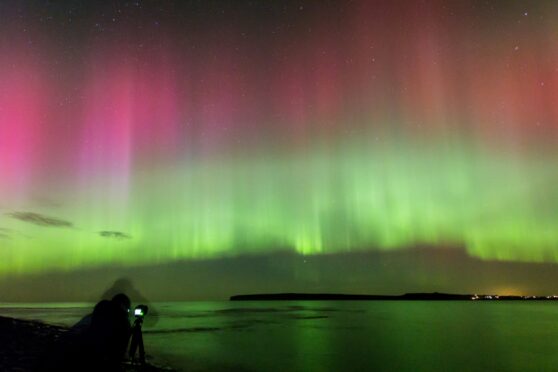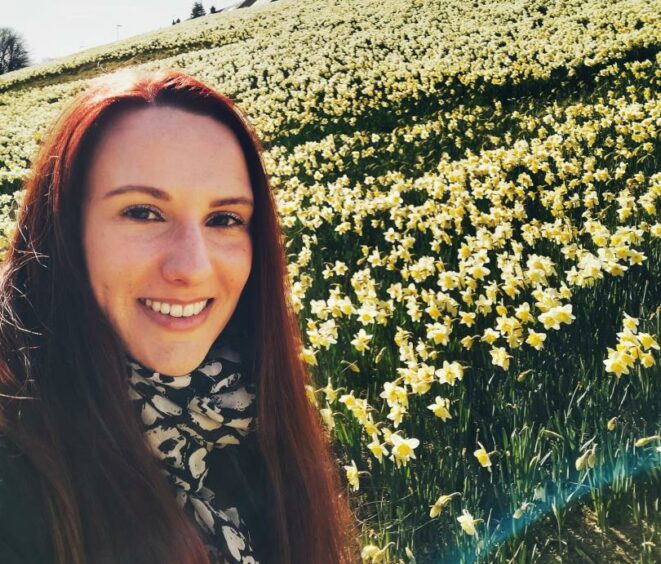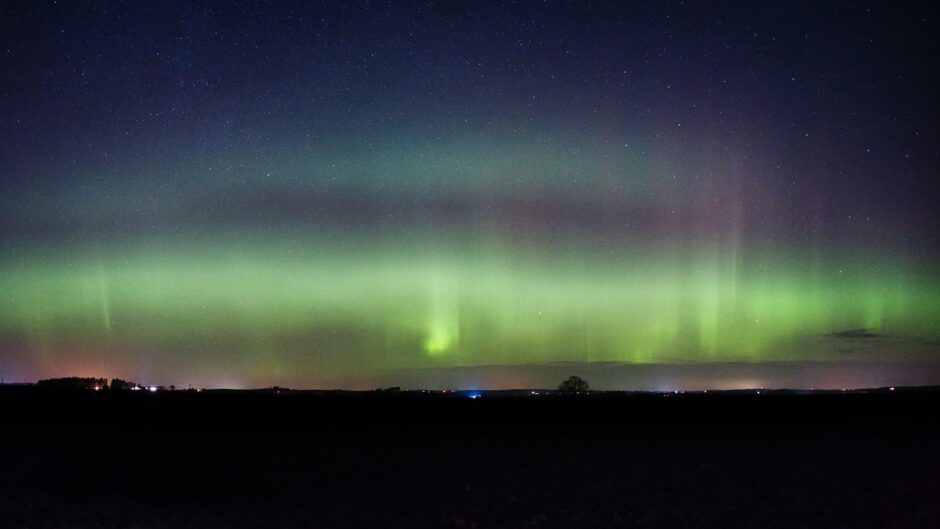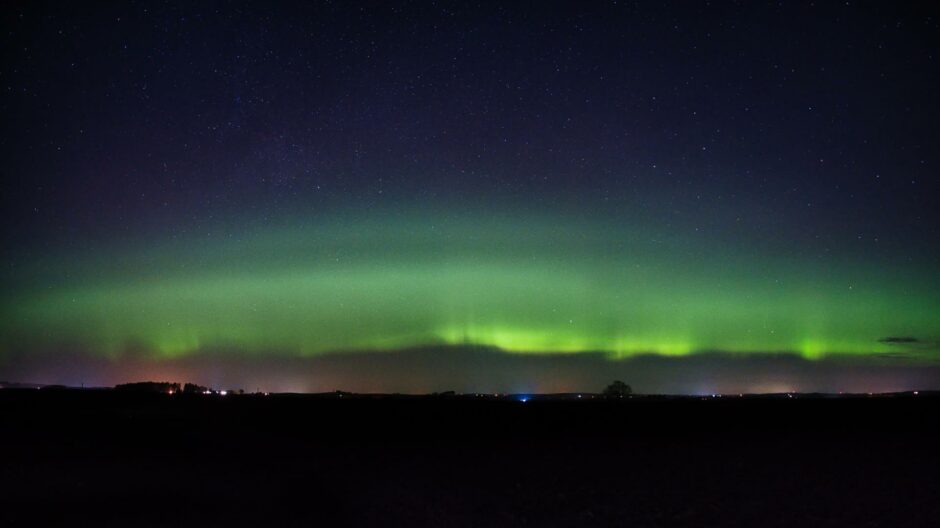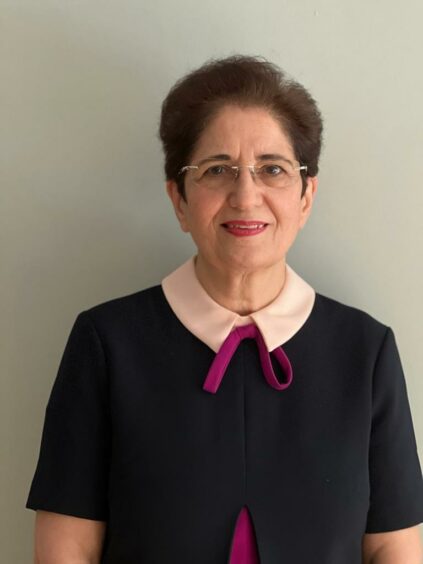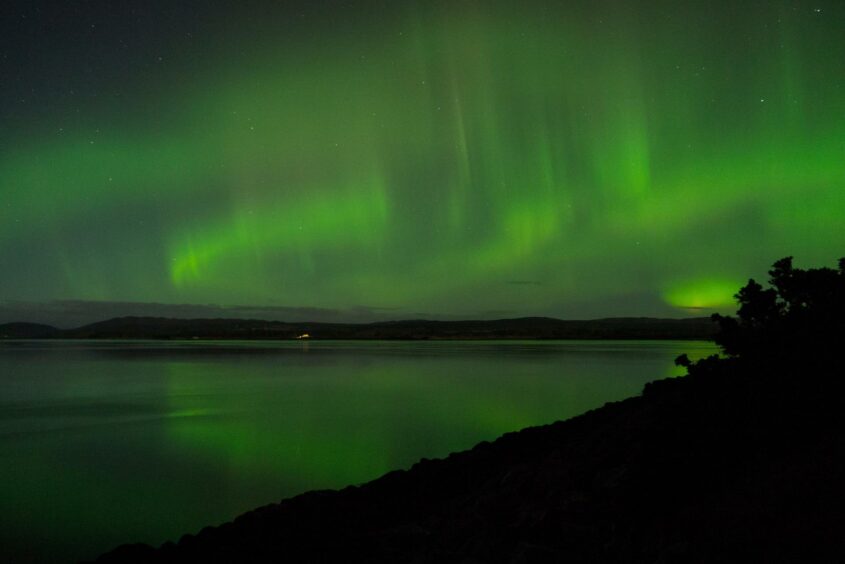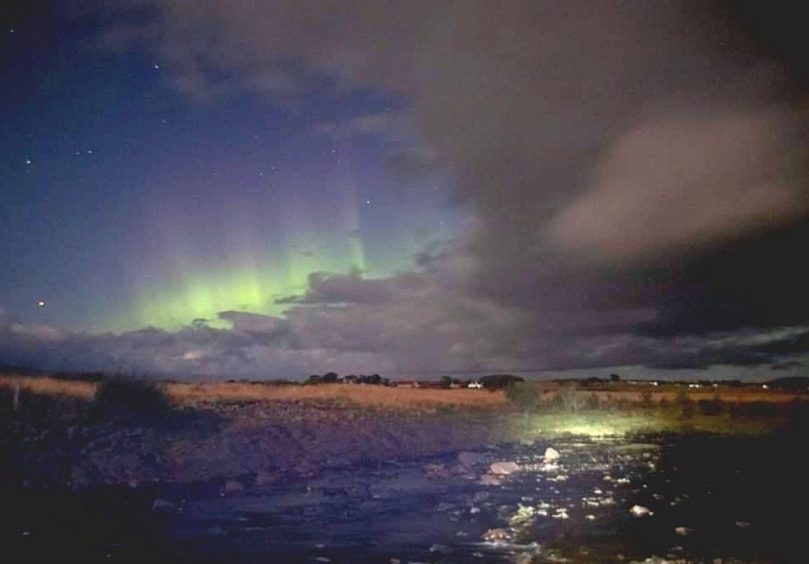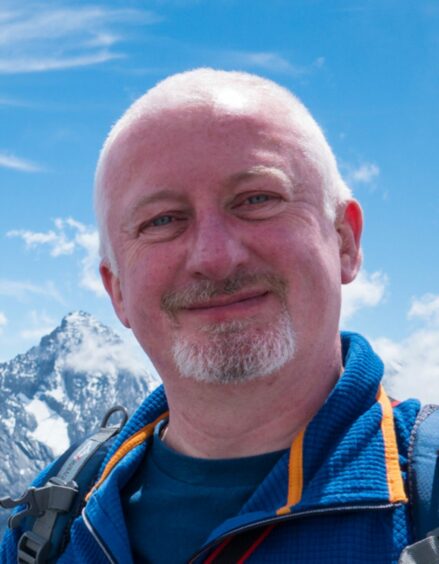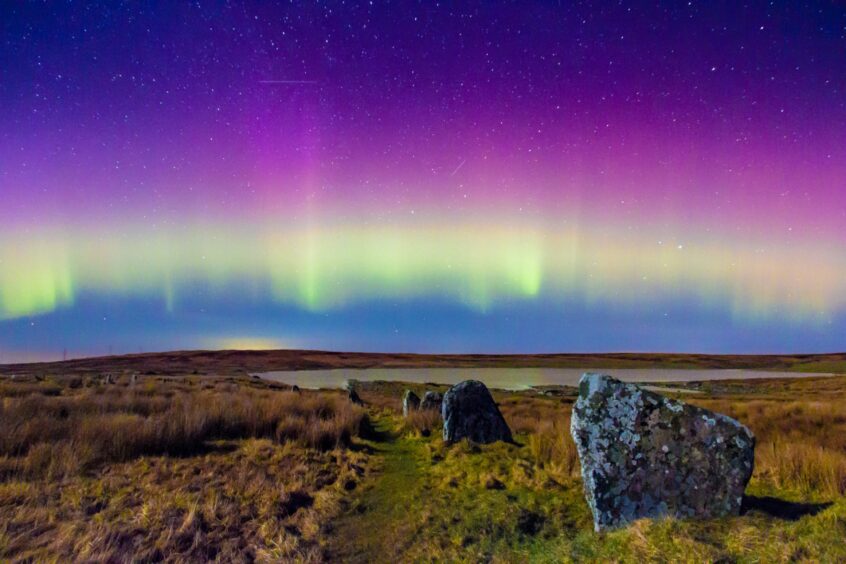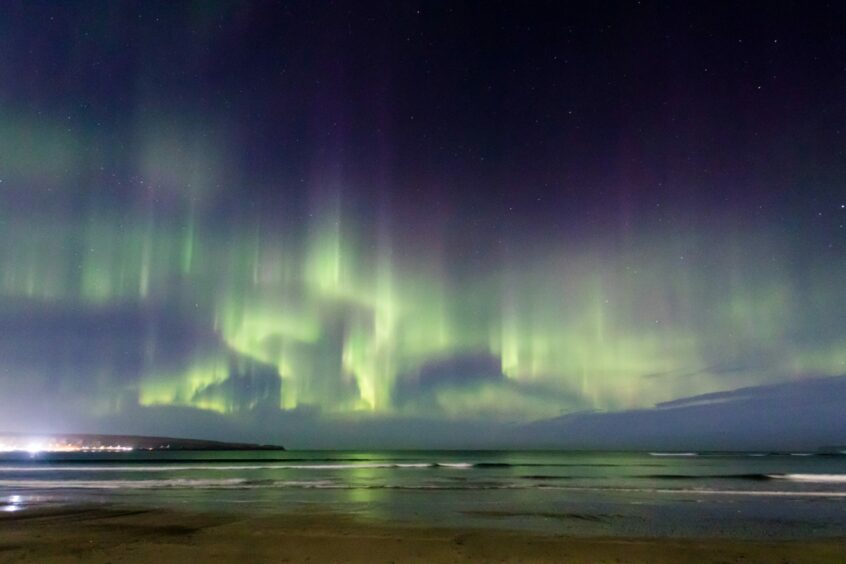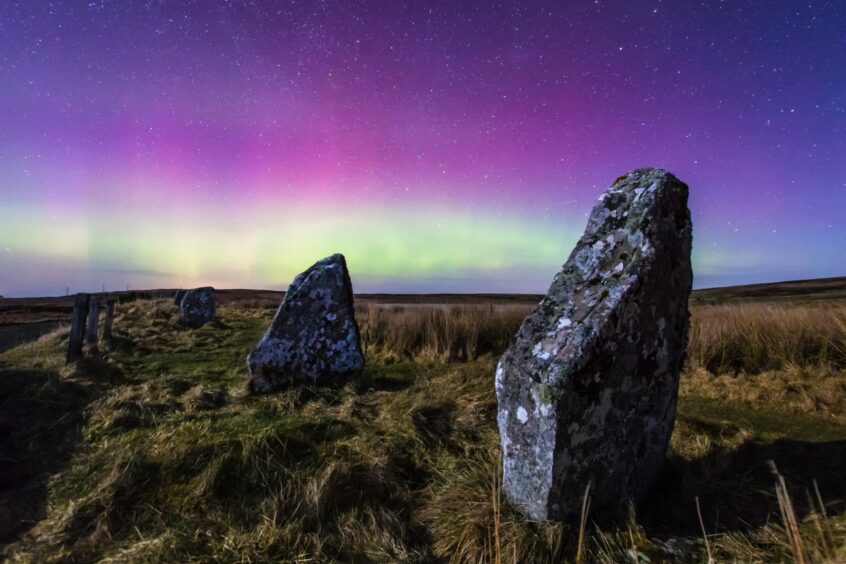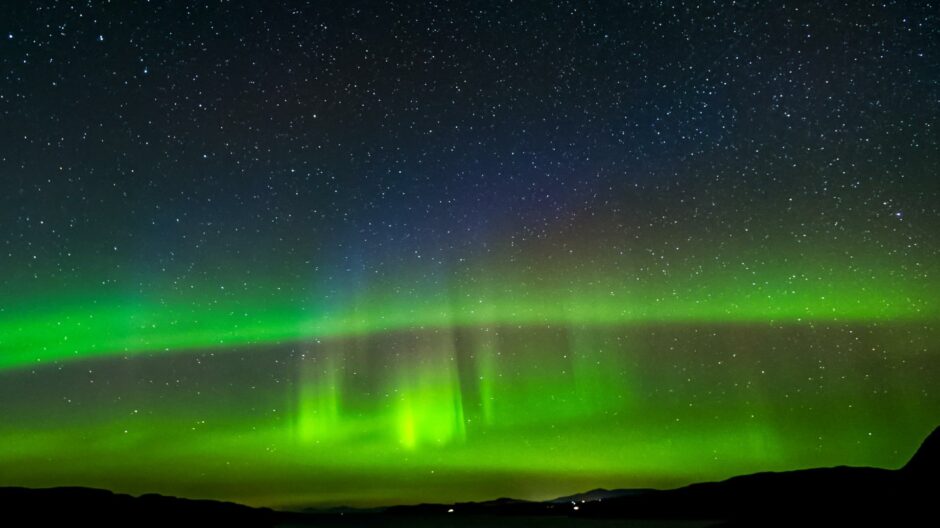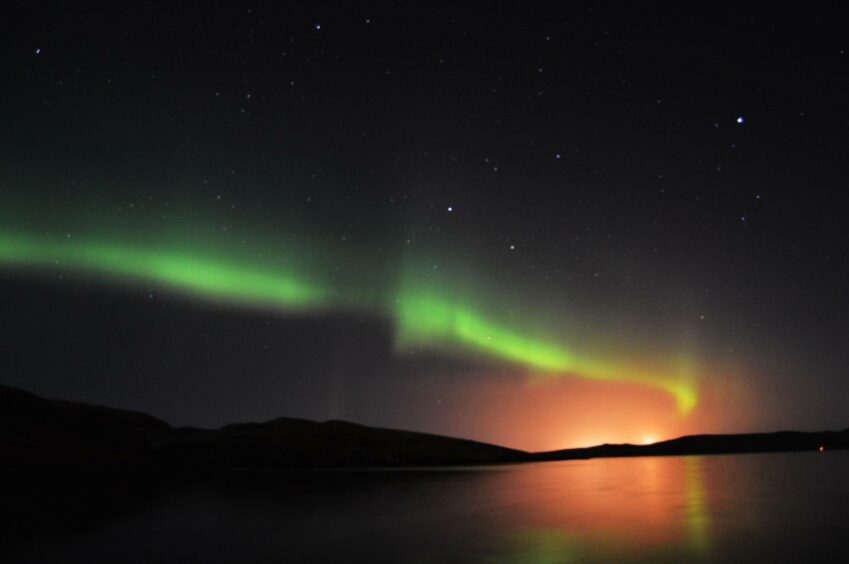Named after Aurora, the Roman goddess of dawn, and Boreas, the Greek god of the north wind, those who wait patiently for a glimpse of the elusive, dancing lights are often rewarded with a celestial phenomenon – a dazzling display of colour and movement.
Whether amateur enthusiasts or academic researchers, for people who spend their time tracking the appearance of the aurora borealis, the wait is always worth it – in Désirée Ventura’s case, several years.
Desiree, who moved to Aberdeen in 2015 from Italy to work in hospitality, had studied geology and was aware of the Northern Lights – but had always believed they could only be found in the remote high latitudes, Arctic and Antarctic regions.
“I think I lived in Aberdeen for two years before knowing about the Northern Lights,” she said. “Then a colleague mentioned to me, ‘You know in Scotland you can see the Northern Lights?’
“After that conversation I started investigating and I found out the Facebook group Aurora Research Scotland. And that’s when I really started to be interested in it.”
Armed with tracking apps and a little more knowledge, Desiree began her quest to see the lights for herself, at first only managing to capture faint glimmers on the horizon.
“My first photo of the Northern Lights was in 2018. It started as a photographic experience. It was very faint, other times it was just a glow, and even though I wasn’t able to see them properly with the naked eye, I didn’t mind. I was happy with my photos because it was a new experience for me.”
That all changed on January 8 this year.
Desiree says: “I went out knowing that there could be a chance to see it – but probably not. And then immediately I started to see them in front of me. And it was the movement that struck me the most, not the colours. I could see pillars of light moving. It was unbelievable.
“I wasn’t ready for this. First of all, the height and the width of the event. It was right in front of me on the horizon, not far away in the distance like before.
“Emotionally it was one of the most beautiful things that I’ve witnessed. I was crying, I was laughing. So I set the camera to take a time lapse and I let it go.”
Desiree is now a professional photographer and videographer (“all related to Scotland”), and is committed to bringing the Northern Lights to her Italian friends, through sharing her images on social media and YouTube.
“I think 90% of people who follow me are Italian,” says Desiree. “They want to see more of Scotland.”
The posts caught the eye of Italian specialists in Scottish travel, Scotzia Viaggi, who approached Desiree about developing a Northern Lights hunting special tour.
“You’ve no idea how many Italians choose Scotland as a holiday destination every year,” says Desiree. “The Northern Lights for them is something new so they are very excited about it.”
Desiree hopes that September to March next year will see the arrival of some Northern Lights hunters in Scotland, and although sightings can be unpredictable, Desiree is optimistic their trip will be worth it.
“People (in Italy) didn’t know about the Northern Lights. I am so happy that I have brought this to all the Italian Scotland lovers out there.”
Professor Farideh Honary, Lancaster University
Even seasoned researchers remain excited by the aurora borealis. Professor Farideh Honary has researched the space plasma environment for over 30 years and is part of AuroraWatch, a free service offering alerts when the aurora might be visible from the UK. It is run by scientists in the Space and Planetary Physics group at Lancaster University’s Department of Physics.
“I have always been curious about space, our solar system and the sun-Earth interactions,” she says. “My first observation of aurora was about 30 years ago, and I am still as enthusiastic as I was the first time.”
Aberdeen and the north-east prime aurora spots
Unsurprisingly, for researchers the aurora offers more than just a dazzling light display and visual experience – deeper knowledge of its activities can have real-world applications, too.
“Space weather is caused by solar storms that cause fluctuations in electrical currents in space, and energises charged particles leading to aurora,” explains Professor Honary.
“There is still a lot more to learn with regards to understanding how particles are energised in their journey from sun to Earth, and how they impact our Earth’s atmosphere and climate.
“Understanding space weather and its prediction is one of the hot topics, since space weather can affect our communications, navigation and many other technological systems that we all rely on.”
There are so many different types of aurora and different colours, that you can never say you have seen it all
Professor Honary’s research has taken her to Scandinavia – but Aberdeen and the north-east offer prime UK areas for observation.
“You need both a clear sky – free from both cloud and man-made light pollution – and geomagnetic disturbance,” she says.
“The north-east of Scotland has a better chance to spot aurora because it has more nights with clear sky compared to the north-west of Scotland.”
For many aurora hunters, seeing an event can be hit or miss, but this knowledge – mixed with a bit of luck – is key to success and an experience not to be missed.
“The science provides you with the probability of observing aurora in a given latitude,” says Professor Honary. “And if you happen to be in a place with clear sky where the probability of aurora is high, then you can look towards the north and see the aurora.”
Can you summarise the aurora?
“Mysterious, beautiful and amazing! There are so many different types of aurora and different colours, that you can never say you have seen it all.”
Professor Honary: Aurora basics
- Aurora is a natural display of light in the sky that is mostly observed in the regions close to the North and South Poles.
- It is caused by energetic charged particles from space entering the Earth’s upper atmosphere and colliding with the atoms and molecules.
- This causes the atoms and molecules high up in our atmosphere to become excited and emit distinctive colours of light.
- The different light colours we see in the aurora are because our atmosphere is made of different atoms and each atom emits a distinctive light.
- Aurora is not unique on Earth, it happens at other planets, also.
Gordon Mackie, chair, Caithness Astronomy Group
Gordon Mackie, from Thurso, has the good fortune to live in a location where the Northern Lights make regular appearances. As a member and chair of the local astronomy group, his love for Scotland’s skies is underpinned by plenty of local knowledge supported by like-minded enthusiasts.
“I first saw it (aurora) as a teenager when on holiday in the Highlands,” he says. “I’ve been enjoying views of it since moving from the central belt to Caithness 33 years ago.
“I’m an amateur astronomer, so stargazing and a bit of night sky photography is always enjoyable. If, or when, the aurora makes an appearance, that is a very welcome bonus.
“A good display is a magical sight likely to be remembered for a very long time. I’ve seen it fill the entire sky numerous times – you look up in awe, mesmerised by the dancing lights.”
To track the likelihood of seeing an event, Gordon uses an app but also utilises live and forecast space weather data on websites if the cloud forecast looks favourable. But he admits the hobby can lead to some long nights standing in the cold.
“But it’s only cold if you don’t go properly prepared for the weather conditions,” he adds.
With the next peak due in a couple of years’ time we should see a good number of aurora displays over the next four years
“If you go out with a few others you notice the cold less as you can spend time blethering during the quieter periods of the display.
“But I’ve seen enough really good displays now that I can be a bit more selective in when I venture out.
“If it’s going to be a minor display and the weather is really nasty then I won’t go out – at least not for long! I might even just watch from my back garden instead.”
Gordon’s aurora watching brings him into contact with people from around the world who all want to know where and when they can watch the lights.
He says: “I’ve lost count of the number of times I’ve been asked that, or provided guidance to locals and folk travelling some distance to the north of Scotland for that very purpose.”
Gordon has met aurora fans from England, France, Spain, Brazil and Australia, and directs them to the Caithness Astronomy Group website which has facts and figures on the aurora.
And he has good news for Northern Lights hunters planning a visit to the far north.
“Aurora activity is linked to solar activity, which peaks in cycles of approximately every 11 years,” he explains.
“With the next peak due in a couple of years’ time we should see a good number of aurora displays over the next four years – and for a few years around solar activity peak, sightings from the north of Scotland are fairly common.
“From early May to early August it is generally too bright during the short Caithness night to see the aurora,” he adds. “But the last peak in activity I was seeing the aurora more than 30 times a year. Not bad stats considering there are plenty of cloudy nights.”
Neal Weston, Aberdeen Astronomical Society
Neal Weston has been a member of the Aberdeen Astronomical Society for 30 years after moving to the area from Oxfordshire to work in the energy sector. Now retired, the keen astrophotographer lives in Stonehaven.
A lifelong amateur astronomer, he remembers his first experience of the Northern Lights vividly.
He said: “We had had a very strong display here in 2003. I just walked outside not even expecting anything, I looked up and there was this light shining out of the sky, and I thought ‘What on Earth is that?’
Dark skies and perfect light
“And then it suddenly clicked what was going on. That’s when it first really hit me that you could see them beautifully from up here – and they could be very strong indeed.”
Neal’s interest in astronomy increased, driven by dark skies and the absence of light pollution that allows more celestial phenomena to be observed with the naked eye.
“When I lived down south you could look up in the sky and it was kind of an orange glow, you could make out the odd star,” he explains. “When I came here it was so dark, the stars just pop. It was an extraordinary sight.”
It never loses its mystery. The science just helps, I find. if you know what’s happening and why it’s happening, that makes it all worthwhile for me
For those who maybe feel they haven’t yet seen the full power of a Northern Lights event, Neal says it all depends on solar activity and the extent of the magnetic poles at that time.
“When the sun emits a solar storm and all these charged particles, some of them will be very fast and strong, and sometimes they will be weak. It just depends on how strong that interaction is when they hit the Earth.
Neal continues: “This interaction forms an oval around the magnetic poles, so if it’s a weak aurora, from here (Stonehaven) it would be low on the horizon. You wouldn’t see any colours or anything, but as soon as it gets stronger, that oval will widen and you’ll start to see it from Scotland. And if it’s strong enough you’ll get it right overhead.”
And there’s good news for aurora hunters this year, he adds.
“The sun tends to be active in an 11-year cycle and we’re ramping up now to another maximum, so the aurora will start to increase again.”
Despite being well-versed in the facts behind the phenomena, Neal says the aurora borealis continues to intrigue.
“The science of it excites me. It’s not just the pretty colours – you realise that something that happened on the sun several days ago has hit the Earth and it’s causing all this interaction and display. It’s pretty awe inspiring really, isn’t it?
“It never loses its mystery. The science just helps, I find. if you know what’s happening and why it’s happening, that makes it all worthwhile for me.”
All-sky camera reveals wonders of Scottish skies
- Videos taken by the all-sky camera courtesy of Neal Weston. First video (February 4th), shows aurora captured on the AllSky camera, with two peaks of activity from around 21:00 and at 23:20. North is to the left. Second video (January 8th) on long exposure showing an intense event. North to the left.
- All-sky cameras make timelapse videos that reveal the movement of the stars as well as record bright meteors and satellites. They are contained within a weatherproof enclosure with a clear plastic dome, the camera inside fitted with a 180° fisheye lens pointing upwards. The camera is linked to a computer to record images of the sky every few seconds and the resulting video is processed later to make a timelapse movie.
Hot spots to see the Northern Lights in Scotland
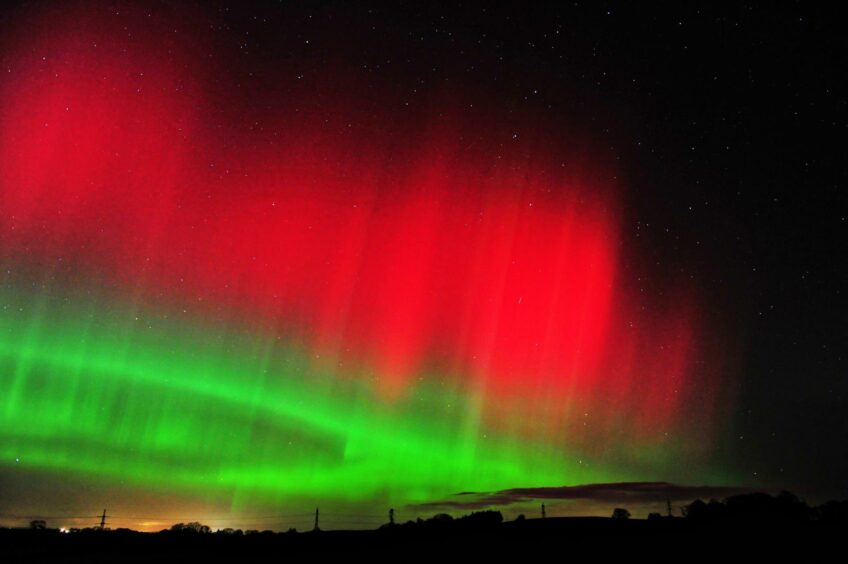
- Shetland, Orkney and Caithness (Noss Head, Wick)
- Aberdeenshire and the Moray Coast such as Nairn, Portknockie, Cairn o’ Mount
- Outer Hebrides: Lewis, Harris and the most northerly tip of Skye
- Far north west of Scotland around Applecross, Lochinver, Ullapool
- Cairngorms
- Galloway Forest Park in Scotland’s Dark Sky Park
- Rannoch Moor and Perthshire
- Angus and the Fife coast
- And if especially lucky, Calton Hill and Arthur’s Seat, Edinburgh
